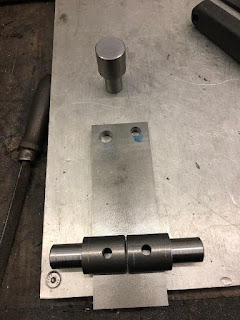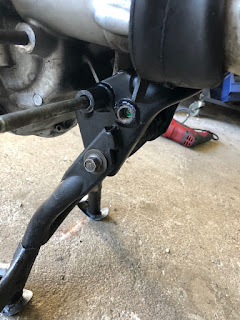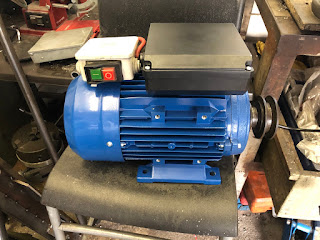Last time we left off with having cut a huge gaping gash into the rear frame tube to finally make the rear mount adjustable again. So at first this had to be welded up again and then the inside ground flat again.
The amount of loose rust that came out was more than impressive though.
A 40mm flap wheel was the perfect tool in the end to get rid of the weld slag that had built up on the backside and remove a bit more rust on the inside.
In order to work out, how everything will be going together, I had to weld on the final bends, which gave me the opportunity to finally do some thin-wall stainless TIG-welding again.
By the way did I mention that it was a bit fresh in the workshop?
After all of this it was well about time to lay out and make the mounting hardware for the rear sidecar mount.
Stuff that makes the engineer happy: when you hit that number WAY closer than planned.
As the tube in the frame I was going to use, was 14.odd mm in diameter, I made two bushes to get it down to spot-on 12mm.
Obviously I needed a long enough bolt, which started out as a bit of all-thread with a nut welded on.
Then (for the umpteenth time) the sidecar step fell out of its box and I decided to get the snapped stud out and fit it up to the sidecar-frame
After this very welcome intermission, I started again on making that rear mount. First of all it needed an M10 thread in the back, so I could take it off during the numerous mockups. (So I thought - never had to take it off even once.)
The turned parts were done to a light interference fit, to limit the number of hands needed to make everything line up.
Nice... this sits right next to the rear wheel and with this amount of leverage it'll twist the lower subframe into a pretzel in no time.
"All the amps" were applied and the rear mount lengthened by about 130mm. Bonus: it now can sit a bit higher as well as it doesn't have to clear the muffler anymore, but only the exhaust pipe. Which is another few milimeters gained.
Shortened and welded the rear mounting tube and "pinned" the mount (for future-welding) with an M8-bolt to the backplate.
It will do for rolling it around in the workshop, but not much more without welding, but it will definitely make triangulating it a lot easier.
The last bit that I turned my attention to this time was the front top mounting point. Now I had a lovely clevis mount, but unfortunately it was male (externally threaded) and I wanted to use the long bolt connecting both top-mounts and as such, needed the female version of it. A nut with a clevis, if you would like to see it this way.
Unfortunately I didn't manage to get it milled in time for this post.
So, the next step is to turn the old girl into a roller and maybe (while we're at it anyway) make the upper rear mount and then find out how to do the exhaust routing, fit the footpeg-backplates and work out how to run the front downtubes.















































